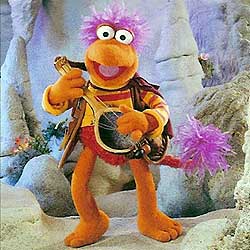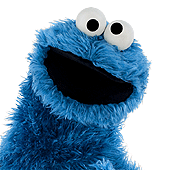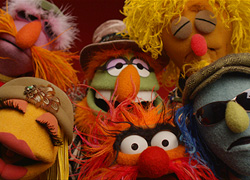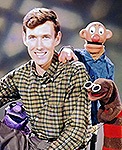For me, one of the appealing aspects of puppetry is that for a brief moment the puppet is ‘real’…as real as anything. Under manipulation, it has all of the aspects of what we see as ‘existing’—movement, voice, personality. Perhaps because it seems alive, we (being children at heart) allow it to be alive. This is, of course, more easily achieved with a puppet that has personality before the puppeteer ever picks it up, but like I said, part of the illusion is that we allow the puppet to live in our minds.
I’ve learned, as I grow older, that the happiest moments in life involve a child-like fascination and an ability to shut out the ‘realities’ of life. I remember the Friday after 9/11 my family and I met some friends (as we did every Friday back then) at the drive-in to see The Princess Diaries. After a week filled with anxiety about the global future, I found (to my pleasant surprise) that for two hours that the world was a shadow and the ‘reality’ involved a teenage girl unwillingly thrust upon the world stage. (Besides that it was a really cute movie.) The movie in no way changed history or the events that were about to unfold, but it did offer a time for escape, but I digress.
One other aspect that I think applies to this is the skill of the puppeteer and his ability to 'become the puppet'. It’s just like the skill of an actor to become the character. Instead of seeing Jimmy Stewart, we see George Bailey. Puppeteers do this, too, to a degree. Their outpouring of skill in this area helps sustain the ‘reality’ of the puppet.

 Welcome to the Muppet Central Forum!
Welcome to the Muppet Central Forum! Back to the Rock Season 2
Back to the Rock Season 2 Sesame Street Season 54
Sesame Street Season 54 The Muppets Mayhem premieres
The Muppets Mayhem premieres Bear arrives on Disney+
Bear arrives on Disney+ Sam and Friends Book
Sam and Friends Book